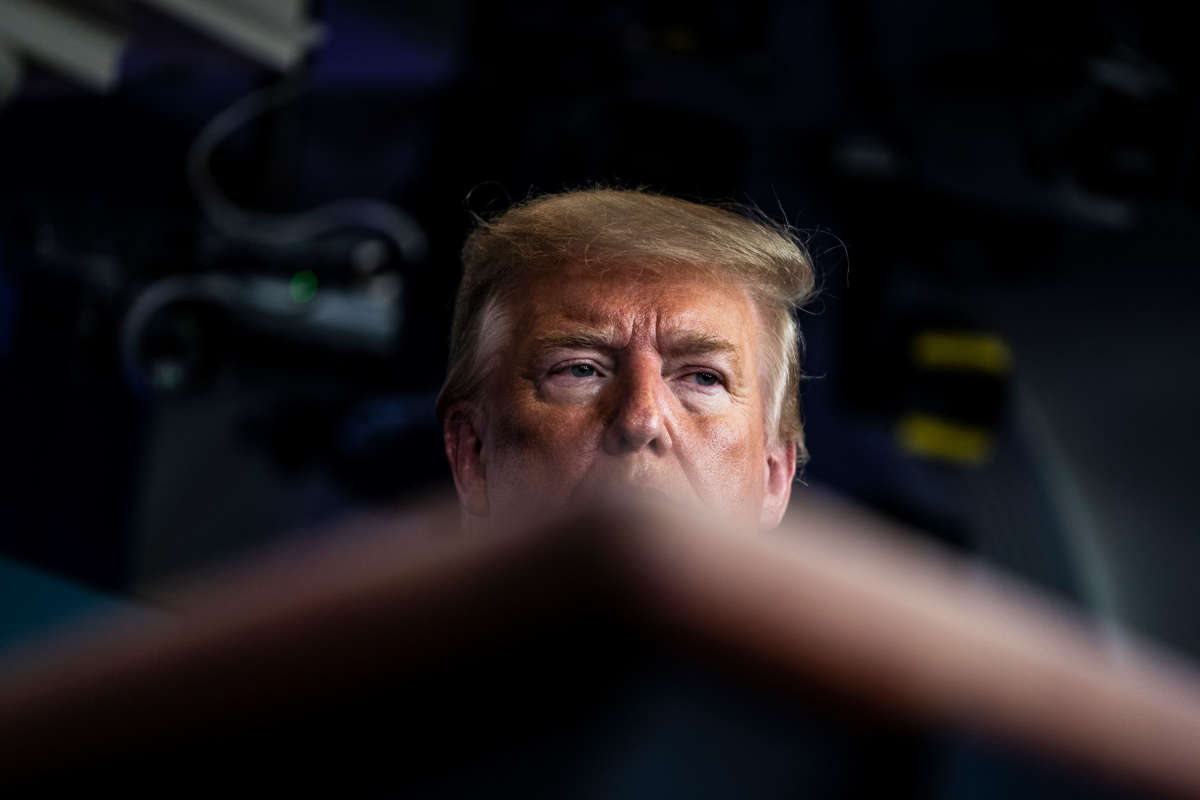Former presidents rarely weigh-in directly on the work of the officeholders who follow in their immediate footsteps, but former President Barack Obama has been doing just that in subtle, indirect ways of late.
In remarks he made on Wednesday through social media, Obama, while giving praise to one state’s actions in combating the spread of coronavirus, threw some considerable shade toward President Trump, suggesting that he had not created a viable plan that would work on the national level to address the crisis.
“While we continue to wait for a coherent national plan to navigate this pandemic, states like Massachusetts are beginning to adopt their own public health plans to combat this virus — before it’s too late,” Obama tweeted.
The former president’s observations on the current president’s actions on the COVID-19 situation highlight how Trump has seemingly been all over the place when it comes to how he treats the pandemic.
Trump has offered up a three-phase plan that allows for portions of the country to transition away from stay-at-home orders and to reopen in controlled ways. Each phase requires that states demonstrate the disease has diminished, in both the number of reported symptoms seen day-by-day as well as the number of positive test cases reported, for a two-week period between each phase.
There are notable problems with the plan, however, as Ashish Jha, director of Harvard’s Global Health Institute, explained to NPR. Primarily, the plan puts the onus of testing on the states.
“There are features of it I like — gated, measured approach to re-opening,” Jha said. “But they largely acknowledge that they can’t fix the testing backlog and therefore, are throwing in the towel on that, and making it a state responsibility with little guidance on what is adequate testing.”
Just one day after Trump announced his three-phase plan, however, he sent out a trio of tweets that seemed to contradict it entirely. Noting that protests were happening in a number of areas across the country calling for an immediate end to social distancing measures, Trump tweeted “LIBERATE MINNESOTA!” “LIBERATE MICHIGAN!” and “LIBERATE VIRGINIA,” with the last instance including a mention of Second Amendment gun rights, in addition to the implied call for ending stay-at-home orders.
That left many confused: did Trump want a plan that was calculated and phased, or did he support these protesters’ calls for an immediate “reopening?”
Things got even more complicated on Wednesday afternoon, when, during a press briefing at the White House, Trump said that Gov. Brian Kemp of Georgia, who was moving his state toward reopening some aspects of its economy, was doing so in a premature manner.
“I want him to do what he thinks is right, but I disagree with him on what he is doing,” Trump said. “I think it’s too soon.”
But just hours earlier, Trump had praised the idea that states were ending social distancing rules. “States are safely coming back. Our Country is starting to OPEN FOR BUSINESS again,” Trump tweeted.
In some ways, it’s possible that Trump’s plan may be working exactly as he wanted it to — not as a way to combat the spread of the coronavirus, but to soften the blame from himself if things go sour, and more COVID-19 cases begin to develop.
Some have suggested that, if things go well, Trump can credit himself with developing a plan that was successful; if they don’t go well, he can pinpoint specific states where cases or deaths went up, and place the blame on those governors instead. His criticism of Kemp’s actions highlight that supposed strategy may already be in the works.
Joe Biden, the former vice president under Obama and the current presumptive Democratic nominee to run for president against Trump, said that the plan offered by the current chief executive was exactly that — a chance for Trump to hand off responsibility to the states.
“I wouldn’t call it a plan. I think what he’s done, he’s kind of punted” on offering a way out of the crisis, Biden said.
Our most important fundraising appeal of the year
December is the most critical time of year for Truthout, because our nonprofit news is funded almost entirely by individual donations from readers like you. So before you navigate away, we ask that you take just a second to support Truthout with a tax-deductible donation.
This year is a little different. We are up against a far-reaching, wide-scale attack on press freedom coming from the Trump administration. 2025 was a year of frightening censorship, news industry corporate consolidation, and worsening financial conditions for progressive nonprofits across the board.
We can only resist Trump’s agenda by cultivating a strong base of support. The right-wing mediasphere is funded comfortably by billionaire owners and venture capitalist philanthropists. At Truthout, we have you.
We’ve set an ambitious target for our year-end campaign — a goal of $250,000 to keep up our fight against authoritarianism in 2026. Please take a meaningful action in this fight: make a one-time or monthly donation to Truthout before December 31. If you have the means, please dig deep.
